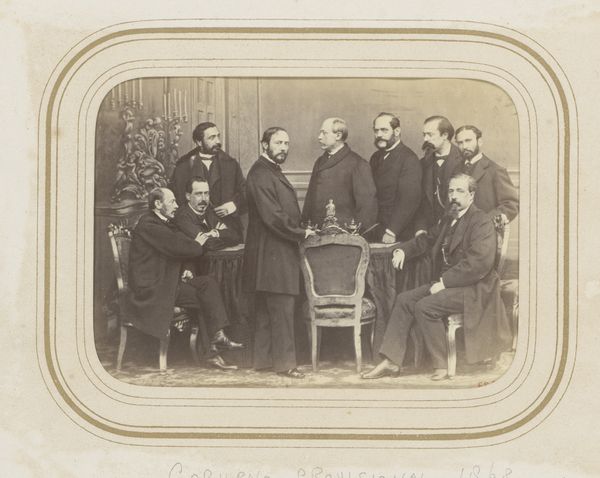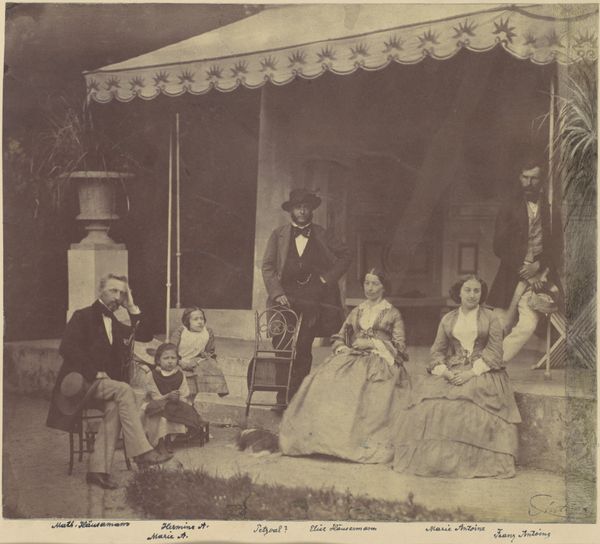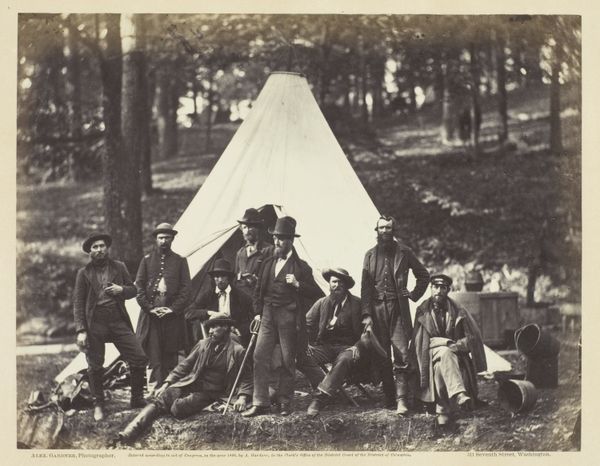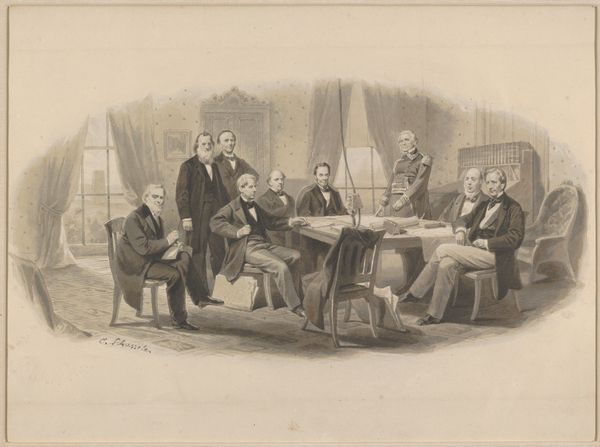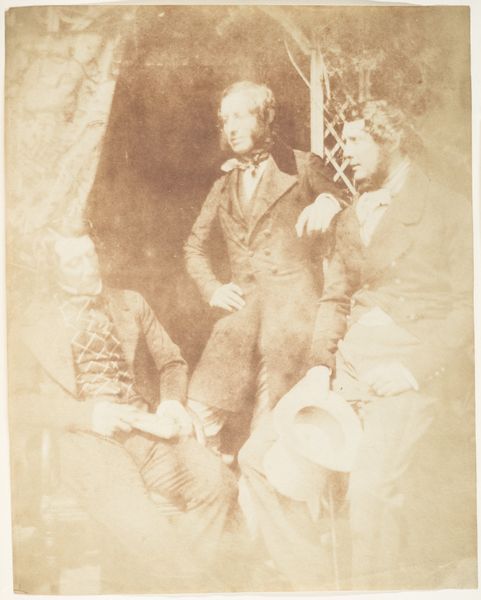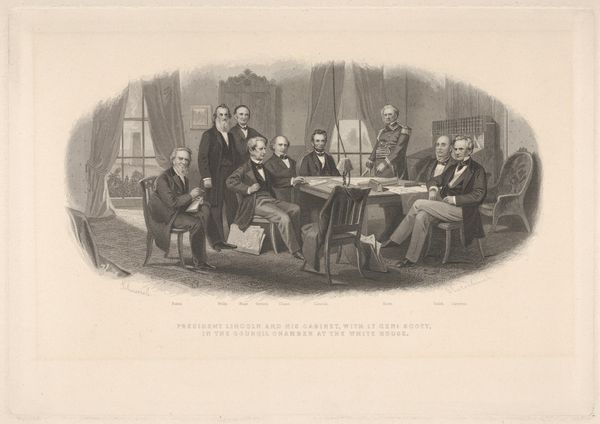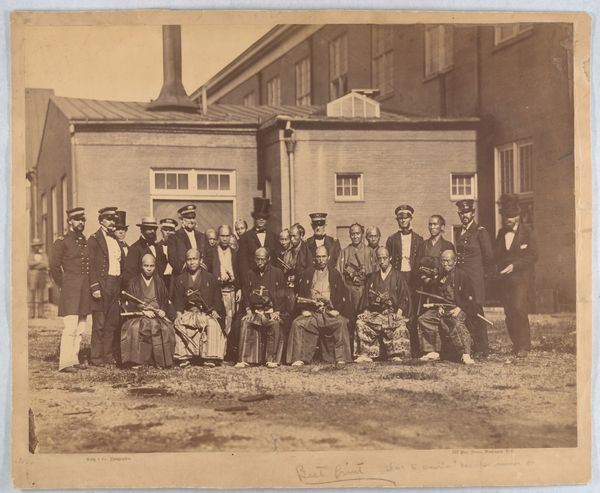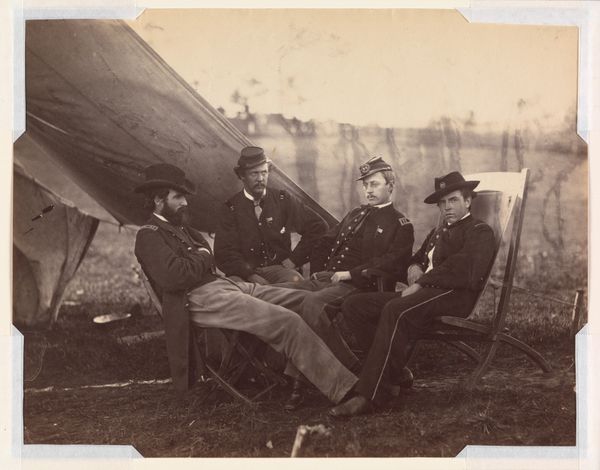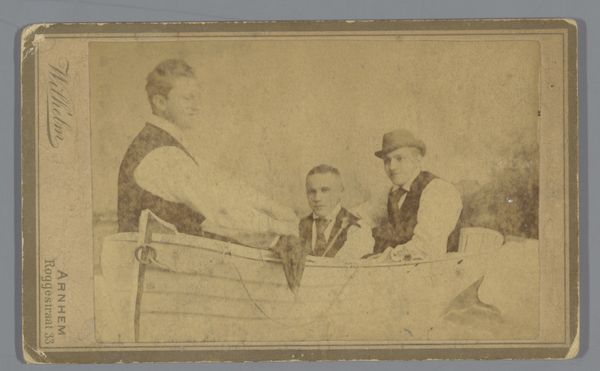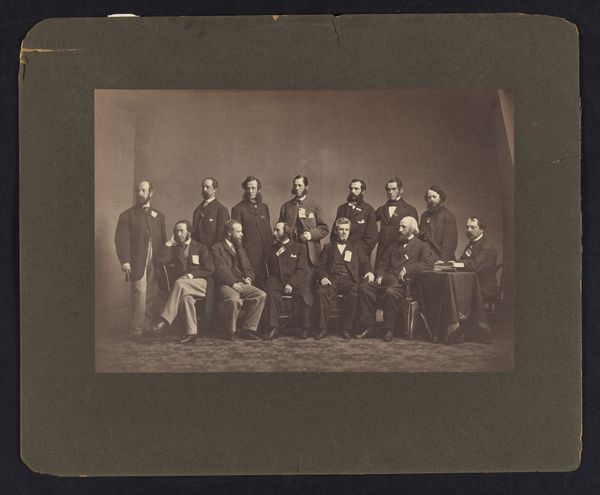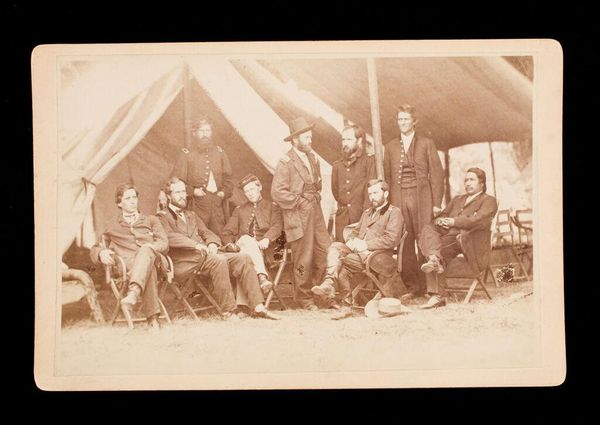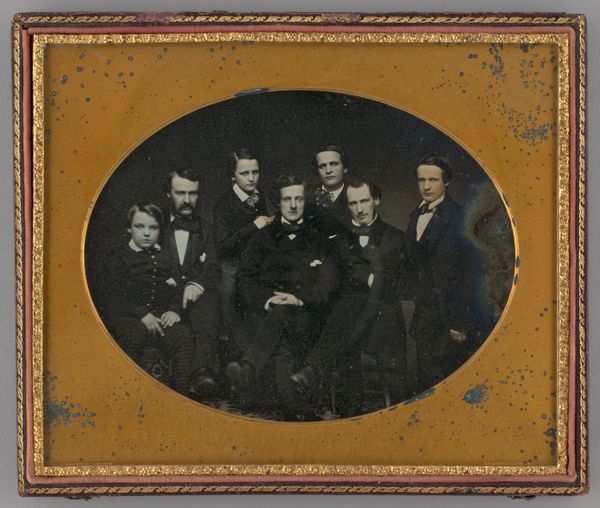
daguerreotype, photography
#
portrait
#
daguerreotype
#
photography
#
historical photography
#
group-portraits
#
romanticism
#
scottish-colorists
#
men
Copyright: Public Domain
Curator: This intriguing photograph is titled "Annan Presbytery" and was created between 1843 and 1847 by Hill and Adamson. The work, housed here at the Metropolitan Museum of Art, is a fascinating example of early photography using the daguerreotype process. Editor: It strikes me as both intimate and formally posed. There's something in the figures' postures that feels almost staged, yet the soft focus imbues the scene with a sense of gentleness, even nostalgia. Curator: Indeed. Group portraits such as this offer an invaluable insight into the social dynamics of the time. Notice how the men are arranged. It is also a moment of upheaval within the Church of Scotland, leading to what was called The Great Disruption. Editor: Ah, interesting! The arrangement almost mirrors a symbolic hierarchy. Some are seated in positions of power, while others stand slightly behind, possibly representing their standing within the presbytery itself. It is as if the sundial looms like an indifferent witness. The passing of time is indifferent to their religious affairs. Curator: Precisely. Hill and Adamson documented many of those involved in the Free Church movement. Beyond that, there’s the technical feat. The extended exposure times required for daguerreotypes meant sitters had to remain incredibly still. To hold these poses reveals the power they believed in their movement. Editor: Thinking of the symbolism, what significance might be gleaned from the paper the man in the center is holding? It seems to draw focus amidst the somewhat muted tonality of the image. Curator: It's likely a document relating to the issues at hand within the presbytery—possibly outlining points of contention, resolutions, or correspondence with other church leaders. The power of literacy, of disseminated documents, should not be dismissed. Editor: Considering the context and the somber, though not overly grave, expressions on their faces, one gets the sense of a pivotal moment caught in amber. It's history, not just recorded, but perhaps self-consciously presented for posterity. Curator: I agree. "Annan Presbytery" represents more than just a photographic portrait. It's a historical document, an early experiment in photographic artistry, and a social commentary, all rolled into one. Editor: I’m left thinking how powerful the symbolic gesture of holding that paper must have been, underscoring both the authority of written doctrine and perhaps also the burdens it imposes.
Comments
No comments
Be the first to comment and join the conversation on the ultimate creative platform.

